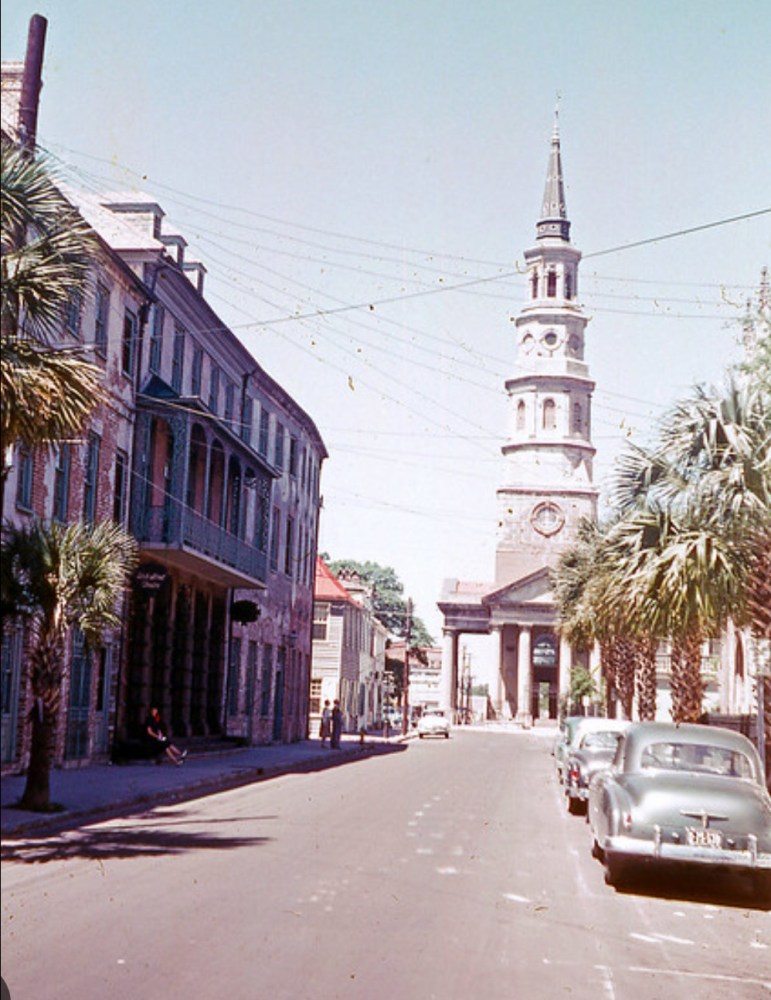Charleston, SC in the 1950s: A Glimpse into Post-War Culture and Development

50’s
Charleston, South Carolina, is a city steeped in history, known for its stunning architecture, rich culture, and coastal charm. The 1950s marked a pivotal era for Charleston, a time of transformation and renewal following the challenges of World War II. This blog post takes a nostalgic journey back to 1950s Charleston, exploring its culinary scene, cultural vibrancy, development, and the allure of its barrier islands. We’ll also compare and contrast the Charleston of the past with the thriving city we know today.
Post-War Charleston: A Time of Renewal
The end of World War II in 1945 brought a wave of optimism and change to Charleston. The city, which had faced economic hardships during the war, began to experience a revival. The military presence remained significant, with the Charleston Naval Shipyard and other installations contributing to the local economy. As soldiers returned home, the population grew, leading to a surge in housing developments and businesses.
The post-war era also saw a cultural renaissance. Residents sought normalcy and celebration after years of conflict, and Charleston’s rich history and traditions took center stage. The 1950s were characterized by a sense of community, with families coming together to enjoy local events, festivals, and gatherings.
Culinary Delights: Popular Restaurants of the 1950s
Dining in Charleston during the 1950s was a reflection of the city’s Southern heritage and coastal bounty. Local restaurants were cherished gathering spots where families and friends would come together to enjoy hearty meals. Some popular establishments included:
– **The Charleston Grill**: Known for its classic Southern cuisine, this restaurant quickly became a favorite among locals and visitors alike. Patrons savored delicious dishes like shrimp and grits, fried chicken, and collard greens.
– **The Olde Pink House**: While it has since become a renowned fine dining establishment, in the 1950s, it was a charming local eatery that served traditional Lowcountry fare in a historic setting.
– **The Oyster House**: Fresh seafood was a staple of Charleston’s culinary scene, and The Oyster House was a beloved spot for locals to enjoy oysters on the half shell and other seafood delicacies.
The food culture of the 1950s laid the foundation for the vibrant culinary scene that Charleston is known for today, with a strong emphasis on fresh, local ingredients and traditional Southern flavors.
Cultural Vibrancy and Tourism
The 1950s saw a burgeoning interest in Charleston’s history and culture. The city’s historic district attracted tourists eager to explore its cobblestone streets, antebellum architecture, and historical landmarks. The annual Spoleto Festival, which began in the late 1970s, was influenced by the cultural movements of the 1950s, highlighting the arts and drawing visitors from around the world.
Local events, such as the historic Charleston Christmas Festival, celebrated the holiday season with parades, decorations, and community gatherings. The city’s rich African American heritage was also celebrated through cultural events, music, and art, contributing to the diverse tapestry of Charleston’s identity.
Development and Barrier Islands
As Charleston began to thrive in the post-war years, development extended beyond the city limits to the surrounding barrier islands, including Folly Beach, Isle of Palms, and Sullivan’s Island. These picturesque destinations became popular retreats for families and tourists alike.
Folly Beach
Folly Beach, known as the “Edge of America,” began to attract visitors with its laid-back atmosphere and stunning coastline. In the 1950s, the island was still relatively undeveloped, offering a rustic charm that appealed to beachgoers seeking a peaceful escape. The iconic Folly Beach Pier, built in 1931, served as a central attraction where families could fish, stroll, and enjoy the ocean views.
Isle of Palms
Isle of Palms also started to gain popularity in the 1950s, with its beautiful beaches and family-friendly atmosphere. The island was home to a mix of vacation rentals and private residences, making it a desirable destination for Charleston families looking for a weekend getaway.
Sullivan’s Island
Sullivan’s Island, with its rich maritime history, offered a quieter alternative to the more commercialized beach destinations. The island’s historic sites, such as Fort Moultrie, attracted visitors interested in exploring Charleston’s military past.
The Cooper River Bridge
One of the most significant developments of the era was the construction of the Cooper River Bridge, completed in 1929. By the 1950s, it had become a vital transportation link between Charleston and the surrounding areas, facilitating the growth of tourism and commerce. The bridge provided residents and visitors easy access to the barrier islands, paving the way for increased tourism and development.
Comparing Charleston: Then and Now
Fast forward to today, and Charleston has transformed into a thriving city that beautifully blends its historic charm with modern amenities. The culinary scene has exploded, with award-winning restaurants and chefs showcasing Lowcountry cuisine on a global stage. Tourism has become a significant economic driver, with millions flocking to experience Charleston’s unique offerings each year.
While the city has embraced growth, it has also faced challenges, including issues related to preservation, gentrification, and environmental concerns. The barrier islands, once quaint retreats, are now popular vacation destinations with luxury resorts, restaurants, and shopping.
Despite the changes, Charleston has managed to retain its historical essence, with initiatives aimed at preserving its unique architecture and cultural heritage. Annual festivals continue to celebrate the arts, music, and food, drawing inspiration from the rich traditions established in the 1950s.
Conclusion
Charleston in the 1950s was a city on the rise, marked by post-war optimism, culinary delights, and cultural vibrancy. The transformation of the city during this decade laid the groundwork for the Charleston we know and love today. As we reflect on its past, it’s essential to celebrate the heritage and history that continue to shape this remarkable city, ensuring that the spirit of Charleston endures for generations to come. Whether you’re strolling through the historic streets or enjoying the sun on the barrier islands, the charm of Charleston resonates deeply, a testament to its enduring legacy.
